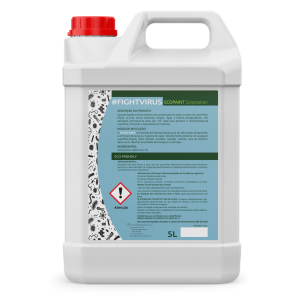Rubber Master & Component B
is developed by ECOPAINT Corporation and is an ECO Product.
Recycled rubber granules, obtained by mechanical grinding at room temperature of end-of-life tires. 100% vulcanized tire rubber.
COMPONENT B is a one-component polyurethane binder based on polyols and MDI. It appears as a transparent liquid with no suspended materials. The product is cured by reacting with ambient humidity or water.
TECHNICAL DATA
Rubber Master
- Physical Shape: Cuboid-like particles
- Nominal Dimension of Particles: 4.0-6.0mm
- Humidity: 0.05%
- Steel Particles: ≤0.05%.
- Textile Fiber Particles: ≤ 0.05%
- Density: 0.45-0.5 Kg/Dm3
APPLICATIONS
- Gym floor
- Bedrooms
- Street walks
- Playgrounds
- Between others
COMPONENT B is used as a binder for the production of rubber and cork agglomerates from recycled rubber granules or EPDM.
For the production of agglomerates of rubber and cork, it is recommended to use 5 to 10% of COMPONENT B, depending on the size and quality of the granulate, the type of process and the final properties desired. The most suitable production process is hot compression. For cases of production at room temperature, the addition of water and/or catalyst is recommended.
QUANTITY OF MIXING
For every 20kg of Rubber Master add 1L of Component B.
ADVANTAGES
ENVIRONMENT: One of the advantages of our glue, once applied, it maintains the same volume in the wet and then in the dry, without releasing any harmful gas into the atmosphere.
STORAGE
COMPONENT B must be stored in the original packaging, away from moisture and direct sunlight. Under proper storage conditions and when kept in its original sealed packaging, the quality of the product is guaranteed for a period of 12 months. The storage temperature must be kept between 5 and 30o C. At very low temperatures, the viscosity increases significantly, which can cause processing difficulties.
Consult the safety data sheet for detailed information on handling, storage and disposal of the product.
HANDLING
The product has isocyanates in its composition, so it must be handled in places with good ventilation and/or air extraction conditions, namely when used at high temperatures. Always respect good health and safety practices when handling chemicals. Avoid contact with eyes and inhalation of vapours. Avoid prolonged or repeated skin contact.








